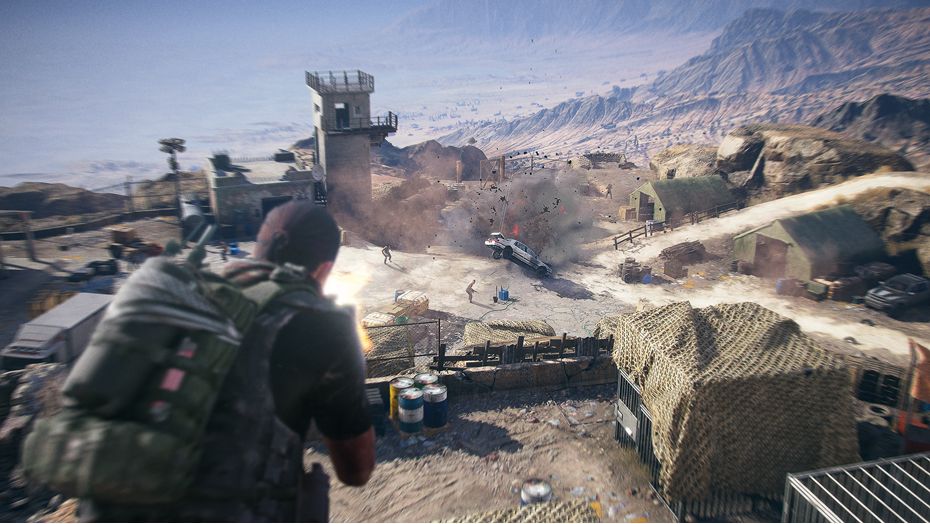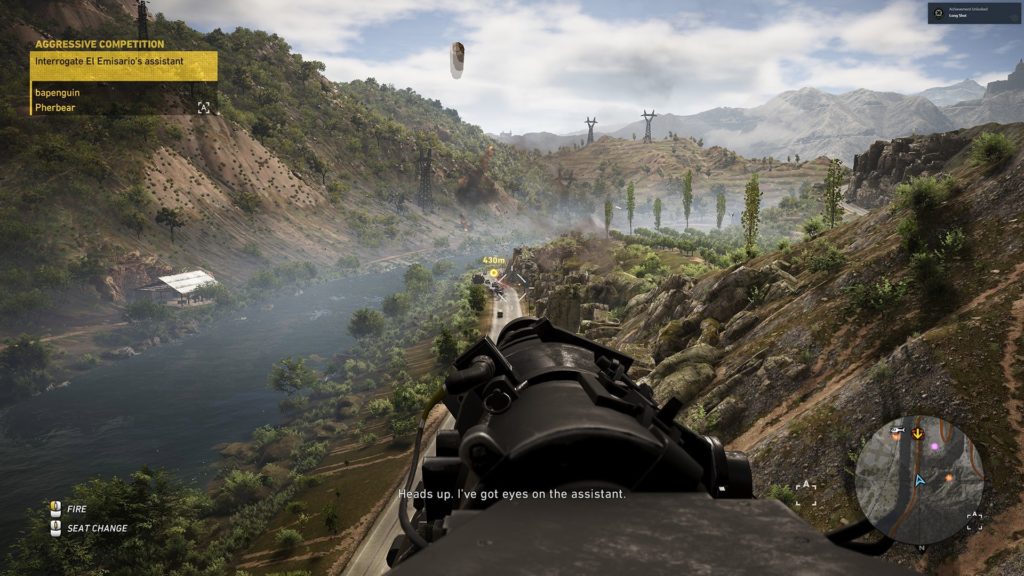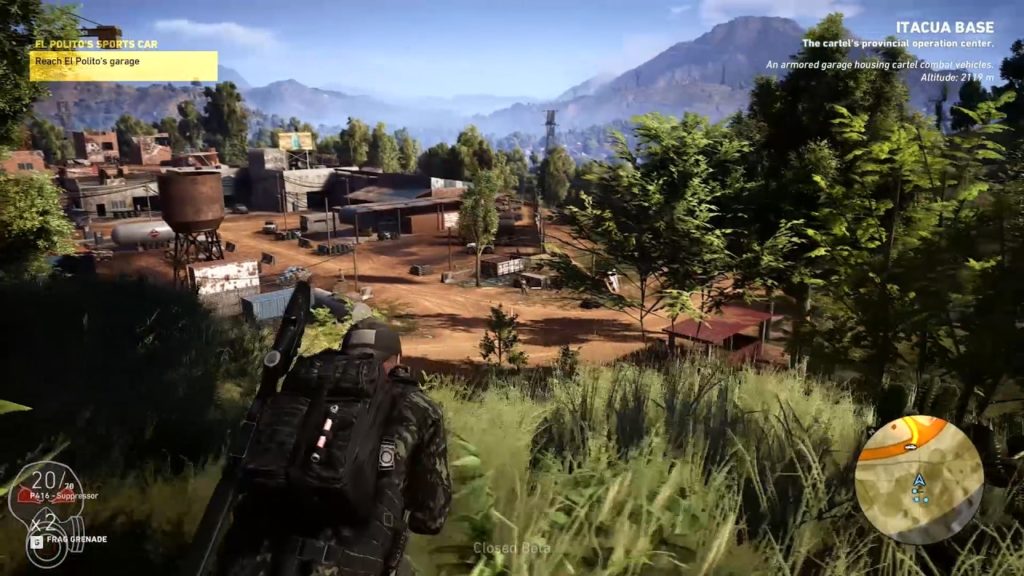magine you have a small fishbowl, one of those that sit on kitchen countertops. Put four goldfish in with a few decorations and you’ve got yourself a neat little fishbowl. Now imagine if you put everything in that fishbowl into a shark tank with a few more decorations. It’d look pretty empty with just four goldfish, right?
Tom Clancy’s Ghost Recon: Wildlands is akin to putting four goldfish in a shark tank. While the gameplay can be exhilarating and the freedom unprecedented, the vast landscape actually works against it. The game feels barren, as you encounter the same mission structures throughout the world
In Wildlands, your mission is to take down the Santa Blanca cartel, who dominate the production and trafficking of narcotics in the country of Bolivia, and is in cahoots with the national military. Upon killing an undercover DEA agent, their status has been upgraded to a terrorist organization. Your quartet of elite special operaters, called Ghosts, is sent in to take down the key members of the cartel, working your way up to kingpin El Sueno.
Ubisoft took the key tenets of its other open world games and applied them to Wildlands: It has the vast wilderness of Far Cry, with the emphasis on customizable weapons and skills similar to that of The Division.
What’s different is the freedom that Wildlands gives you; there are no set paths to go down to progress the story. Instead, you unlock missions by acquiring files that give you leads, and interrogating lower ranked members of the cartel gives you intel for optional missions or bonuses. In fact, once you complete the the mandatory starting region, the whole country opens up for you to tackle as you please.

In fact, 2016’s The Division is probably the most apt comparison. Ghost Recon: Wildlands follows the same gameplay structure, but instead of enemy difficulty dictated by a level, the regions carry a star-based rating system. The higher the rating, the more challenges you’ll face. Flying into a five-star region will earn you the company of military helicopters or anti-aircraft missiles. Dodging those missiles to avoid getting shot down makes for tense moments.
On the ground, planning and executing missions can also be quite tense. Using drones to understand the layout and marking targets helps, but approaching the encounters is a different kettle of fish. Anything and everything could go wrong, from a missed shot alerting enemies, to unforeseen patrols noticing your squad hiding amongst the foliage. A wrong move means you are shifting the approach from stealth to a full-fledged firefight. It’s those moments that make the gameplay exhilarating.
With the nation of Bolivia split into twenty or so regions, there is a lot to explore. The downside to this is the lack of density within. While the regions differ in appearance, few of the missions inside them vary little in structure. For Wildlands, bigger doesn’t necessarily mean better.

The biggest trouble I had with the game’s enormous world is traversing from point to point. Due to the size, moving on foot takes a very long time. Naturally, the best way to navigate Bolivia is by way of vehicle or aircraft. Unfortunately, driving is one of the most frustrating experiences in Wildlands. The physics have a rubbery feel, where a light tap on the steering reacts like you performed a hard turn. While flying is better, sometimes the controls feel counter-intuitive.
I had an aversion to driving or flying whilst I was playing the open beta, instead deferring to others to take the helm when I was playing online. Sadly, I didn’t have the same luxury when playing single player, as I was forced to drive or fly myself.
My AI squadmates were competent, but lacked initiative. Using the sync-shot skill to prompt my squad to take down enemies simultaneously was satisfying, and having them always available to revive me once per mission was welcome, but that was the extent of their helpfulness.
This all changes when you venture online. Playing with one to three other players, the game becomes way more tense and freewheeling. Firstly, you can teleport to other players, negating the torture of driving. Secondly, to be able to coordinate movement with others, and be in tune with the layout of a compound through communication, really makes you feel like you’re a part of a Ghosts unit. Even when things go wrong, Wildlands’ multiplayer is still entertaining as heck. There’s nothing like lining up your targets as a squad, with one person counting down to synchronise shots, only for a voice to pop up a second later, saying “oops, I missed” before anarchy ensues. Yelling at each other to get everyone out alive amongst the chaos is the most fun I had.

Upgrading your skills requires tagging supplies for the rebel fighters. They range from first aid to communication equipment, all of which allows you to accumulate points to spend on skills. This concept is neat at first, as you roam around collecting supplies, but after a while it becomes a chore, since you have to collect both skill points and supply points to upgrade. I often found myself scouring the area after a mission, because the minimap didn’t show the supplies on my first pass.
Visually, Wildlands stands up well. I really felt the variety of terrain and climate presented to me, with each region being distinctly different. The draw distance is great, although some of the greenery pops in at the last second, especially in instances where you are landing a helicopter. Creating such vast landscape has setbacks though, as I experienced frame drops at times.
This game is one that requires you to play with friends in order to extract the fun out of it. In single player, Wildlands is passable, but in multiplayer it shines. While the missions don’t do much in terms of variety, in playing with others, you find yourself expecting the unexpected. But the real hero is the vast open world, providing you with freedom to approach each objective in any way you wish. Yet while the open world giveth, it also taketh away. A lack of density is obvious, and meandering becomes the most frequent activity that you do.